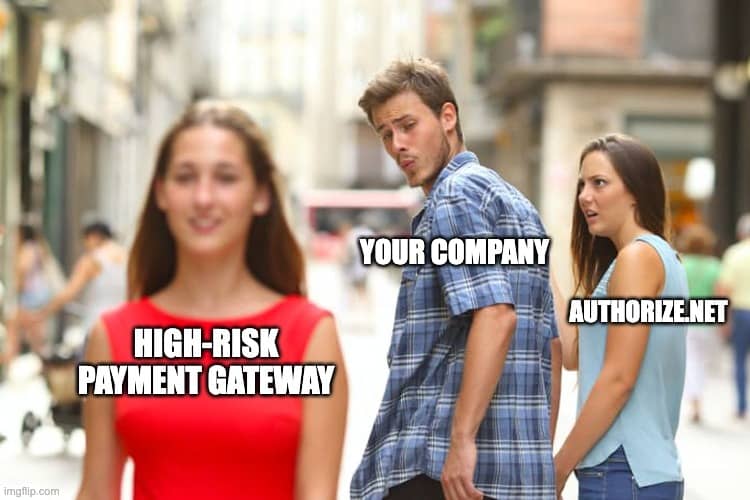Are EIDL Loans Forgivable?

The Economic Injury Disaster Loan (EIDL) program is an emergency working capital loan available to small businesses affected by natural disasters. During the Coronavirus Pandemic, the EIDL loan was open for specific debt relief as part of the Small Business Administration’s (SBA) Coronavirus Aid, Relief and Economic Security (CARES) Act. You could be eligible for loan forgiveness if you received an EIDL from the US Small Business Administration. But before you can apply for loan forgiveness, you must determine if it qualifies or not. Here are some steps to help determine if your EIDL is forgivable:
Table of Contents
- Identify What COVID-19 Relief Fund Type You Received
- Paycheck Protection Program (PPP)
- EIDL Loan
- Targeted EIDL Advance
- Supplemental Targeted Advance
- Shuttered Venue Operators Grant (SVOG)
- Restaurant Revitalization Fund (RRF)
- Review Your Loan Terms
- Verify It’s an SBA-Backed Loan
- Review Eligibility Requirements
- Verify Eligible Expenses
- Calculate Your Gross Revenues
- Determine Your Decline in Gross Revenue
- Prepare Necessary Documentation
- Understand Repayment Requirements
- How Can Zenti Help?
Identify What COVID-19 Relief Fund Type You Received
Some EIDL loans are forgivable, while others aren’t. Some will carry restrictions, while others are processed automatically. If your relief type isn’t forgivable, it may still qualify for a deferment period of up to 30 months. The offered EIDL COVID-19 Relief Fund types were:
Paycheck Protection Program (PPP)
Designed for staff retention, the PPP relief fund type is forgivable, but some restrictions apply.
EIDL Loan
This relief fund type requires repayment and isn’t forgivable. Deferment is available.
Targeted EIDL Advance
This relief fund type is a grant, not a loan. It was awarded for use to pay for working capital and operating expenses that could have been met had the disaster not occurred, healthcare benefits, rent, utilities and fixed-debt payments. Targeted EIDL Advances are forgivable and are automatically processed when qualified expense documentation is provided and verified.
Supplemental Targeted Advance
Similar to the Targeted EIDL Advance, the Supplemental Targeted Advance focused on especially hard-hit businesses in low-income areas and offered an additional 5000 USD. Supplemental Targeted Advances are forgivable and are automatically processed when qualified expense documentation is provided and verified. Qualified expenses are the same as the Targeted EIDL Advance.
Shuttered Venue Operators Grant (SVOG)
SVOG was designed for live venues, movie theaters, museums and talent agents who were negatively impacted economically due to COVID and related shutdowns. SVOG funds can be spent on payroll, rent, utilities, PPE, barriers, other COVID protections, debt incurred before February 15, 2020, payments to contractors up to 100,000 USD per contractor, maintenance, State and local taxes and fees, administrative costs, operating leases in effect as of February 15, 2020, necessary insurance payments, and/or capital expenditures (not the primary use of funds). SVOG is forgivable, but no forgiveness process exists. If the terms of SVOG are met, you won’t be asked for repayment.
Restaurant Revitalization Fund (RRF)
RRF was designed for restaurants affected by COVID and related restrictions imposed to control its spread. RRF funds can be used to pay payroll, business mortgage/rent (not prepayment), utilities, maintenance, construction, supplies, food and beverage (including raw materials), supplier costs and operating expenses. RRF, like the other grants above, are forgivable and are automatically processed when qualified expense documentation is provided and verified.
Review Your Loan Terms
The starting point for determining whether your EIDL is eligible for forgiveness is to review the loan terms and repayment structure you agreed to when signing up for the loan. Forgiveness approval comes from the SBA and requires that you meet specific criteria, up to and including repaying a portion of the loan using eligible costs over a specified timeline.
Verify It’s an SBA-Backed Loan
To confirm whether your EIDL qualifies for forgiveness, ensure it’s an SBA-backed PPP loan or grant rather than another type of government assistance or small business financing program. Make sure your lender communicates with SBA on your behalf and helps with completing any necessary paperwork.
Review Eligibility Requirements
For your EIDL loan forgiveness application to be approved, you must meet certain eligibility requirements set forth by the SBA. This criterion includes the size of the business (number of employees), the duration the business existed before March 2020, etc. You should only apply for EIDL loan forgiveness after reviewing the eligibility requirements. Apply for EIDL forgiveness through the SBA website. You will find detailed instructions on filling out an application form and checklists that help expedite the processing time.
Verify Eligible Expenses
It’s important to document all expenses to repay the loan. Only qualified expenses will be considered for potential forgiveness under PPP and grant guidelines set by the CARES Act Coronavirus Relief Bill. The definition of qualified expenses includes payroll costs, benefits, mortgage interest payments, rent payments, debt obligations (incurred before February 15, 2020) and costs related to utilities like internet services, electric bills, etc. Be aware there may be other specified items outlined by the CARES Act legislation in addition to the items listed above.
Calculate Your Gross Revenues
Calculating gross revenue allows you to determine whether your business qualifies for the rules outlined in the CARES act and what amount is eligible for forgiveness. To figure out your gross revenue, add up all of your company’s income from sales, interest income, dividends, rent payments, royalty payments and any other sources of revenue that aren’t directly related to operating expenses. Be sure to subtract any taxes from this number before calculating your decline in gross revenues.
Determine Your Decline in Gross Revenue
Once you’ve calculated total gross revenue for both 2019 and 2020 or even 2018 - 2020 depending on the available records, compare them to see how much revenue has been lost in 2020 as compared to another period during which there was no significant disruption due to coronavirus or related conditions such as quarantine orders etc. This will help you determine the percentage decline that must be met in order for your EIDL forgiveness application to be approved.
Prepare Necessary Documentation
Individual documentation requirements may vary depending on specific applications. However, most applications require the following documentation: certification about the accuracy of financial statements, signed authorization from authorized officers, representations statement regarding the use of funds, general narrative description outlining how disruptions due to COVID-19 adversely impacted revenues and budget-revised estimates reflecting the impact caused by then current pandemic conditions. Ensure all necessary paperwork and documents are included with the application, so it gets completed on time at the processing stage.
Understand Repayment Requirements
EIDL loans can’t be forgiven. Repayment of EIDL loans may be deferred for up to 30 months. However, interest will still incur during this time. EIDL loans come with a fixed interest rate of 3.75% for businesses and 2.75% for nonprofits. EIDL repayments have a maximum term length of 30 years.
How Can Zenti Help?
Working with a knowledgeable and experienced high-risk payment processor can help maximize your EIDL loan or grant with affordable business solutions. Contact us today!
Read Next

Find out whether Authorize.Net works for high risk merchants, what restrictions you might face and how to get approved.

Get expert advice on selling CBD products on Shopify, including compliance tips and setting up secure payment options.

Find out why Square may deactivate merchant accounts and steps to resolve issues and maintain uninterrupted payment services.
Need a High-Risk Merchant Account?
Disruption-free payment processing at the best price for your situation, guaranteed.
Get Free Guidance Now!